Mark Amery – 11 July, 2010
This romance is likely part of Evans’ strategy to seduce us into thinking further. And maybe my particular eyes have become too educated by photographic history, but I longed for a more disruptive, less conventional approach that left me feeling more disturbed than wooed. These are beautiful pictures but if the work was setting out to highlight environmental dangers, for me it failed by warmly amplifying the beatific.
Having driven to Wanganui through a curvaceous widescreen landscape well shaven and boxed, Peter Evans’ exhibition of landscape photographs Manipulated by the Human Hand at McNamara Gallery presented familiar territory.
This 2008 Elam grad has begun a promising career strongly in well-travelled photographic ground. In the grand artist-traveller tradition, the photographer takes a step back from the view in front of him to beautifully frame the industrialised landscape and romance the sublime. Out on the great New Zealand road trip he’s picked off a veritable tourist guide of iconic national sites of human intervention into the land, as if providing for us a viewing platform: from the Grassmere saltworks to the Homer Tunnel, from the otherworldly sluiced hills around St. Bathans’ Blue lake to the undulating hilltop carpet of Te Apiti Wind Farm in the Manawatu .
Providing impressionistic beauty, colour film here amplifies our awe. There are big skies, mirrored water reflections and an attention to the rich stratum textures in both the land and cloudscapes.
The work typifies the title of the group show of landscape work Paul McNamara recently toured which Evans also featured in: A Serious Kind of Beauty: The Heroic Landscape. That exhibition was interested in the complexity of our grand distanced psychological viewpoint on the landscape, and our aspirational intrusions into it (Te Apiti Wind Farm in Evans’ show sits neatly next to views of hydroelectric and other power or material generation).
In Evans’ images the human control of the immensity of nature through its framing is complicated by the depiction within the frame also of our physical transformation and utilitisation of the environment through mining, sluicing, damming, and channelling. From a procession of pylons at Tiwai Point to a water channel in the Mackenzie Country this is documentary mapping of the physical evidence of our transfer of energy across precious environments.
The clear local precedent for Evans is the early work of Wayne Barrar, which experimented with how the employment of different photographic techniques might affect our view of the manipulated big New Zealand landscape. Evans takes a far less experimental tack, expressing his passion for environmental issues through reverence rather than intrusion.
Beautifully and intelligently framing the world, he has a great eye for how to contain dynamically within the photographic chamber the immensity of the landscape. He expertly embraces all the romantic tricks of the photographic trade. Commonly, landforms are isolated by strong separation between foreground and background, or the distancing effect of land as seen across water. A particular strength is in finding the elegant strong movement and shape in the frame that brings an emotive human music to the landscape. Take the curve of road entering a wormhole that is the Homer Tunnel, wrapped around by an immense whirl of immense snow covered rockface. Or, at close to dark, the plays of natural and artificial light and shadow on a complex arena of natural and manmade shapes at a reservoir in the Waitakere Ranges.
I was also reminded of the 1970s black and white landscape work of American Robert Adams, whose photographs had a formative effect on me way back when in suggesting light and the frame can transform even the ugliest things into beauty.
Adams was part of the seminal exhibition New Topographics: Photographs of a Man-Altered Landscape in 1975, which in reprised form is now touring the States. Yet these ‘New Topographic’ photographers were embraced at the time for what curator William Jenkins called in the exhibition’s catalogue a ‘stylistic anonymity’: “The pictures were stripped of any artistic frills and reduced to an essentially topographic state, conveying substantial amounts of visual information but eschewing entirely the aspects of beauty, emotion and opinion.”
This comment could not be made at all of Evans. In the distance of their viewpoint, the elegance of their forms, and impressions of the weather he makes these landscapes comfortable again. The human figure is absent, the landscape a kind of be-stilled atmosphere-laden object.
It’s clear he has an interest in exposing the complexity of our relationship to the land and grand environmental mistreatment, yet his image of the Te Apiti Wind farm for example has all the salesmanship of a Meridian brochure. The lights of the Tiwai Point Aluminium Smelter twinkle like a Christmas display across the still cloud-mottled water.
This romance is likely part of Evans’ strategy to seduce us into thinking further. And maybe my particular eyes have become too educated by photographic history, but I longed for a more disruptive, less conventional approach that left me feeling more disturbed than wooed. These are beautiful pictures but if the work was setting out to highlight environmental dangers, for me it failed by warmly amplifying the beatific. Compared to senior practitioners in this field like Barrar and Noble, the work keeps a comfortable distance.
It does however feel of this time and place: a renewed environmentalism for a new generation that co-opts the photographic language that gave us the 100% Pure brand, to present a different kind of coffee table book. Evans’ work is political in a way so many photographers have been wary of, as if it might be seen as not so clever.
Be it Ann Shelton’s recent Anthony Harper Award winning take on Van Der Velden or Mark Adams’ look at Captain Cook sites, New Zealand landscape photography still seems bewitched by contemporary interpretation of history, and in particular the 19th century sublime. The most visible altered-landscape photography recently has been Anne Noble’s of that classic great continent of elsewhere, Antarctica.
Following the ‘Don’t Leave town till you’ve seen the country’ dictum, Peter Evans’ focus closer to home and the political issues of the day is welcome. Whether it’s mining in national parks or water conservation in Canterbury, his images deserves wider attention next to any number of articles in the press about the battleground that is the New Zealand landscape.
Mark Amery
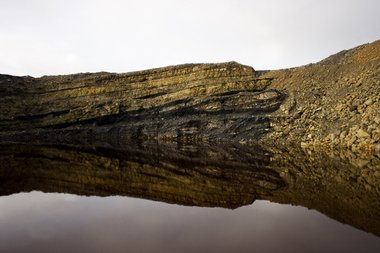
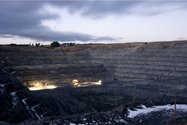

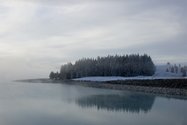
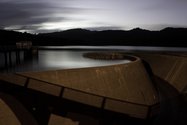
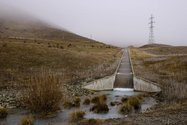
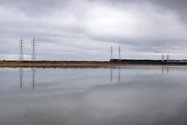
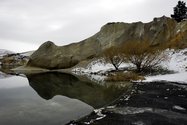
 Advertising in this column
Advertising in this column Two Rooms presents a program of residencies and projects
Two Rooms presents a program of residencies and projects



This Discussion has 0 comments.
Comment
Participate
Register to Participate.
Sign in
Sign in to an existing account.